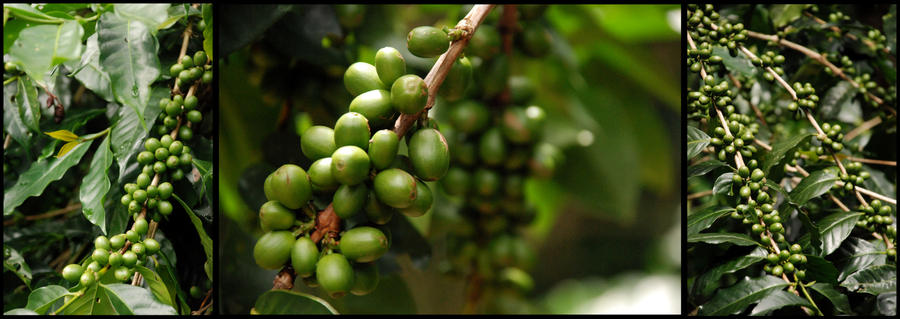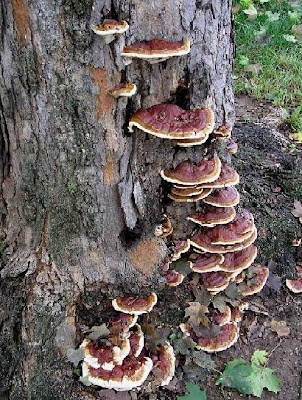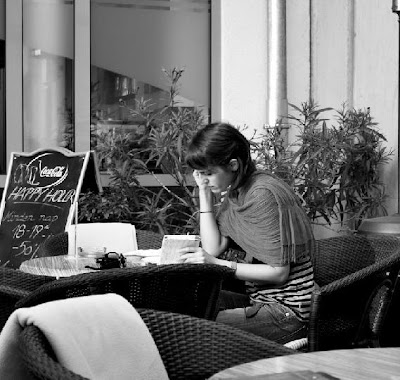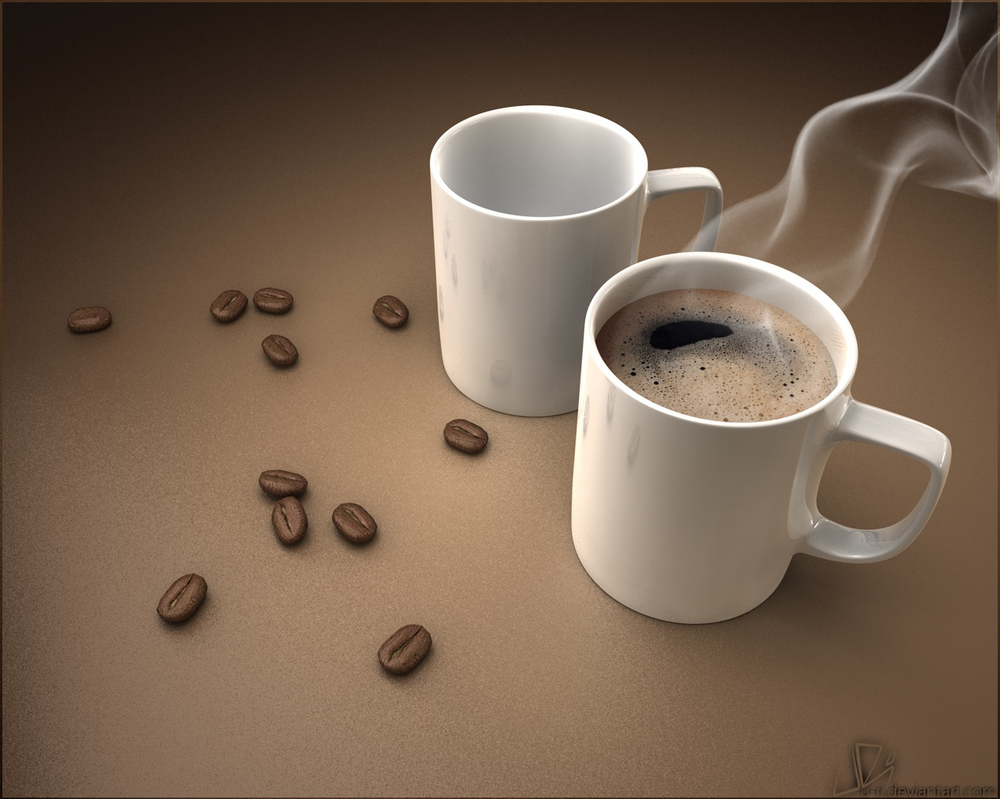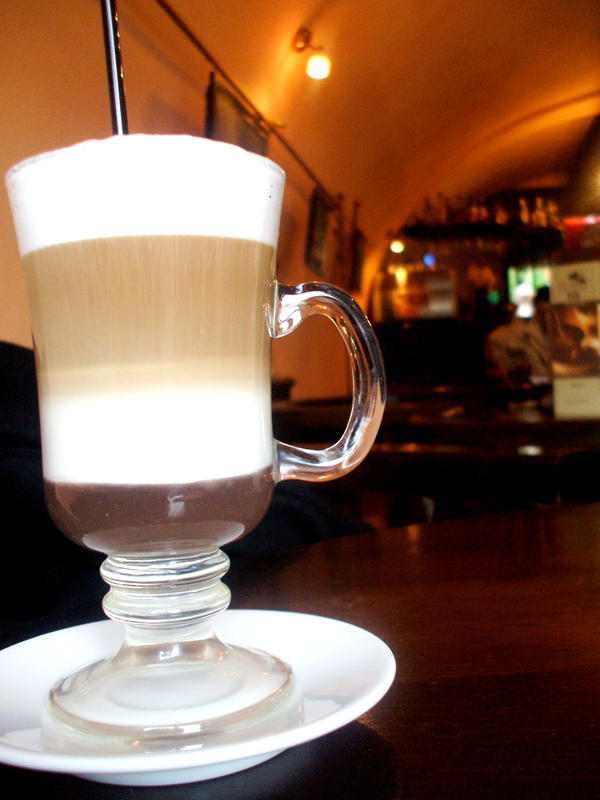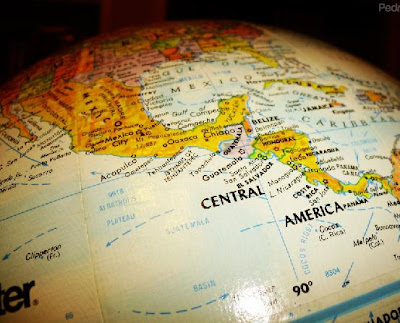- Neutralize toxic free radicals.
- Help protect against systemic oxidative stress.
- Help reduce the incidence of oxidative pathologies such as coronary heart disease.
- Provide health benefits associated with glucose management, Type 2 Diabetes and Metabolic Syndrome, depression and anxiety and oral health.
Passion4coffee is a blog dedicated to coffee and coffee lovers. Find out information about coffee and coffee related subjects.
Saturday, July 10, 2010
Coffeeberry
Ganoderma coffee
Ganoderma Lucidum is a mushroom. But not an ordinary Mushroom. A Red Mushroom. A Red Mushroom that dates back over 4,000. Ancient generations prized this mushroom for its medicinal properties … promoting health and well-being. This mushroom is also known as Lingzhi in China, Reishi in Japan, and Youngzhi in Korea.
Ganoderma Lucidum is a rare, special mushroom created only when conditions are right. In nature, when the proper nutrients (i.e., dead organic matter or soil) are present with the appropriate environmental conditions, Ganoderma Lucidum will exist. Ganoderma will grow in densely wooded mountain forests of high humidity and dim lighting, and typically, on dried trunks of dead trees. According to research, out of 10,000 dead tree trunks, only about 2 or 3 will show a growth of Ganoderma. For this reason, this particular species of mushroom has been very scarce.
Fruitcafe
Thursday, July 8, 2010
Barista
The espresso bar
Coffeehouse
A coffeehouse or coffee shop is an establishment which focuses it's activity around serving hot beverages, primarily coffee and tea. It shares characteristics with a bar and restaurant but it differs from a cafeteria. Not only coffee and tea are served here, you can also find other hot beverages and some light snacking. Many coffee houses in the Middle East, and in West Asian immigrant districts in the Western world, offer shisha (nargile in Turkish and Greek), flavored tobacco smoked through a hookah.
3 in 1 Coffee
3 In 1 Coffee appeared in the market during 1980s, but it only took off in the nineties. There is a growing trend for consumption of soluble-coffee packed as 3 In 1 coffee. A 3 in 1 coffee is basically a blended mixture of soluble coffee, refined sugar and non-dairy creamer. A standard 3in1 coffee sachet weighs 20mg. There are some other variants each weighing 14mg, 18mg to 40mg, depending on the manufacturers marketing strategies. These sachets are sold in containers carrying 20 sachets, 30 sachets, the most popular being 50 sachets family pack. In most instances 3in1 coffee is served hot.
Hot milk or Steamed milk?
Wednesday, July 7, 2010
Coffee substitutes: Chicory

Common chicory (Cichorium intybus) is a bushy perennial herb with blue, lavender, or occasionally white flowers. It grows as a wild plant on roadsides in its native Europe, and in North America and Australia, where it has become naturalized. Common chicory is also known as blue sailors, succory, and coffeeweed. Chicory is also the common name in the US (and in France) for curly endive (Cichorium endivia). There is considerable confusion between Cichorium endivia and Cichorium intybus.
Chicory Varieties
Puna (Grasslands Puna) – Puna is one of the most popular forage varieties. Puna was developed in New Zealand by AgResearch. It is currently being grown as far north as Alberta Canada and as far south as northern Mexico and central Florida, proving that it is more widely adapted than most other varieties. It is resistant to bolting, which leads to higher spring nutrient levels in the leaves. It is also improved for resistance to grazing pressure, which can be very important in small plots. It is also an excellent companion to clover.
Forage Feast – A variety from France improved for human consumption. It is widely available and is also used for wildlife plots. It is very cold hardy and similar in most attributes to Puna; however, because of its selectivity for the food industry, it is lower in tannins than Puna.
Choice – Improved from the Puna variety by Dr. Bill Rumball, Choice is bred for higher winter (early spring) activity. Choice was bred for lower rates of lactucin and lactone for the dairy industry, compounds believed to taint the milk. This is a variety found in Pennington’s Rackmaster blends for seeding deer wildlife plots.
Oasis – AMPAC’s licensed, AgResearch-improved Puna variety. Bred for increased lactone rates for the forage industry. It is believed that lactones give chicory its anti-parasitic attributes, but in the dairy industry it is frowned upon. Oasis is also bred for higher resistance to fungal diseases like sclerotinia.
Puna II – Considered more winter active than most other varieties, which leads to greater persistence and longevity. This variety is in most Pennington blends.
Grouse – A New Zealand variety considered a better companion for planting with forage brassicas. Relative to some other varieties, it is more prone to early flowering and has higher crowns susceptible to overbrowsing.
Six Point – This is a variety produced in the United States and is very similar to Puna.
There are many other named varieties of Chicory and more research development is being done.
Coffee substitutes: Barley Tea
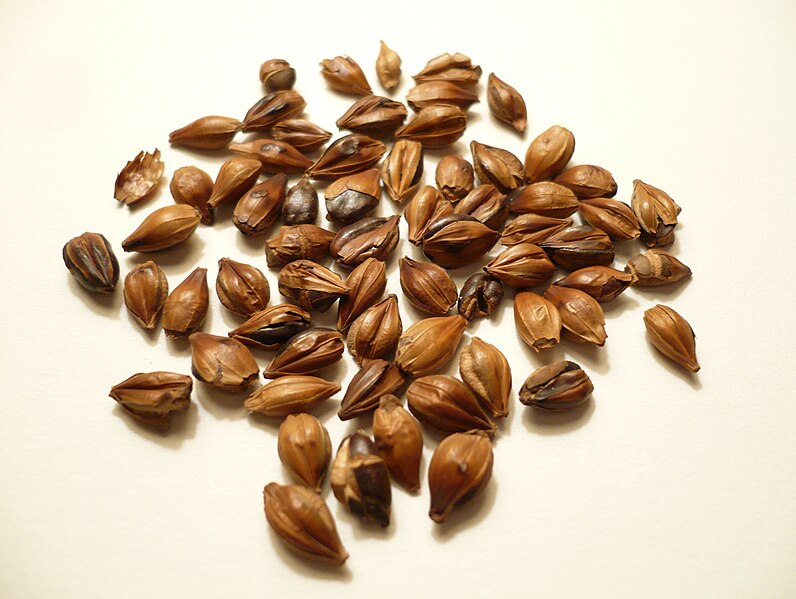
Roasted barley tea is called mugicha (麦茶?) in Japanese, "damai cha" (大麦茶) in Mandarin Chinese, and boricha (보리차) in Korean. While the tea is generally regarded as a cooling summer beverage in Japan, it is served year-round, hot in winter and cold in summer, in Korea. Originally, roasted barley seeds were stewed in hot water (this is still the method generally used in Korea), but tea bags containing ground barley became more popular during the early 1980s; this is now the norm in Japan. It can be found from many different distributors in vending machines all over Japan.
In Korea, roasted unhulled barley is used to prepare the tea. Often the barley is combined with oksusu cha (roasted corn infusion), as the corn's sweetness offsets the slightly bitter flavor of the barley. A similar drink, made from roasted brown rice, is called hyeonmi cha (tisane) or genmaicha (with green tea added).
Roasted barley tea, sold in ground form and sometimes combined with chicory or other ingredients, is also sold as a coffee substitute.
Cafestol
A typical bean of Coffea arabica contains about 0.6% cafestol by weight. Cafestol is present in highest quantity in unfiltered coffee drinks such as French press coffee or Turkish coffee/Greek coffee. In filtered coffee drinks such as drip brewed coffee, it is present in only negligible amounts.
Studies have shown that regular consumption of boiled coffee increases serum cholesterol by 8% in men and 10% in women. For those drinking filter coffee, the effect was only significant for women.
Cafestol has also shown anticarcinogenic properties in rats.
According to a 2007 study from Dr. David Moore's lab at Baylor College of Medicine, cafestol may act as an agonist ligand for the nuclear receptor Farnesoid X receptor and Pregnane X receptor, blocking cholesterol homeostasis.
Cafestol has also been implicated in inhibiting the progress of Parkinson's disease.
The Presso
Presso is an internationally patented, manually operated lever action espresso machine. Designed by P Hunt from Therefore in the United Kingdom. In 2004 it received design awards in the UK.
The body of the Presso is made from hand polished, pressure cast aluminium. Stress bearing components are made from stainless steel. A heat-proof, tough transparent plastic reservoir receives boiling water. The portafilter is a domestic sized(50mm)commercial style, chrome plated unit. The lever action is reminiscent of the ladies legs cork screw. The shower and patented one-way valve are made from food grade silicone.
Adjustments to the three main components of your pour (grind, dose and tamp) will change the body, flavour and consistency of the shot produced. An optimum extraction for espresso is popularly accepted as 25sec.
Grind: a grind that is too fine will produce a longer extraction time. Conversely a grind that is too coarse will reduce the extraction time.
Dose: overfilling and underfilling the filterbasket will affect crema and extraction time.
Tamp: pressure on the tamp or lack there of will affect the even penetration of the puck by water at sufficient pressure.
Tuesday, July 6, 2010
Irish coffee

Irish coffee is a mix of hot coffee, Irish whiskey, sugar (depends on tastes), and topped with thick cream. The coffee is drunk through the cream. The original recipe explicitly uses cream that has not been whipped, although whipped cream is often used.
The coffee was conceived after a group of American passengers disembarked from a Pan Am flying boat on a miserable winter evening in the 1940s. In order to warm them, they were given coffee mixed with whiskey. When they asked weather it was Brazilian coffee, the answer was: "No, this is Irish coffee".
Black coffee is poured into the mug. Whiskey and at least one level teaspoon of sugar is stirred in until fully dissolved. The sugar is essential for floating liquid cream on top. Thick cream is carefully poured over the back of a spoon initially held just above the surface of the coffee and gradually raised a little. The layer of cream will float on the coffee without mixing. The coffee is drunk through the layer of cream. To ensure the integrity of the ingredients of Irish Coffee, NSAI, Ireland's national standards body published an Irish Standard, I.S. 417 Irish Coffee in 1988.
French Press

A French press, also known as a press pot, coffee press, coffee plunger or сafetière à piston, is a simple coffee brewing device, probably invented in France in the 1850s, but first patented by Italian designer Attilio Calimani in 1929, who made subsequent design improvements over the years, and further refined by another Italian, Faliero Bondanini.
A French press consists of a narrow cylindrical beaker usually made of glass or clear plastic, equipped with a lid and a "plunger", made of metal or plastic, which fits tightly in the cylinder and which has a fine wire or nylon mesh filter. The simplicity of the mechanism and its potential for attractive after-dinner presentation have led to a variety of more-or-less aesthetic designs.
Coffee is brewed by placing the coffee and water together, stirring it and leaving to brew for a few minutes, then depressing the plunger to trap the coffee grounds at the bottom of the beaker. Because the coffee grounds remain in direct contact with the brewing water and the grounds are filtered from the water via a mesh instead of a paper filter, coffee brewed with the French press captures more of the coffee's flavour and essential oils, which would become trapped in a traditional drip brew machine's paper filters.
French presses are more portable and self contained than other coffee makers. Travel mug versions exist which are made of tough plastic instead of the more common glass, and have a sealed lid with a closable drinking hole. Other versions include stainless steel, insulated presses designed to keep the coffee hot, similar in design to thermos flasks.
Percolators
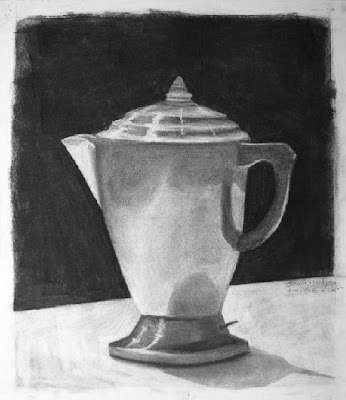
Percolators began to be developed from the mid-19th century. In the United States, James Nason of Massachusetts patented an early percolator design in 1865. An Illinois farmer named Hanson Goodrich is generally credited with patenting the modern percolator. With the percolator design, water is heated in a boiling pot with a removable lid, until the heated water is forced through a metal tube into a brew basket containing coffee. The extracted liquid drains from the brew basket, where it drips back into the pot. This process is continually repeated during the brewing cycle until the liquid passing repeatedly through the grounds is sufficiently steeped. A clear sight chamber in the form of a transparent knob on the lid of the percolator enables the user to judge when the coffee has reached the proper color and strength.
Domestic electrification simplified the operation of percolators by providing for a self-contained, electrically-powered heating element that removed the need to use a stovetop burner. A critical element in the success of the electric coffee maker was the creation of safe and secure fuses and heating elements. While early percolators had utilized all-glass construction (prized for maintaining purity of flavor), most percolators made from the 1930s were constructed of metal, especially aluminum and nickel-plated copper.
Monday, July 5, 2010
Vacuum Coffee Maker

A lot of coffee brewing devices became popular during the 19th century, some of them relying on vacuum principles to operate. The Napier Vacuum Machine, invented in 1840, was an early example of this type. While generally excessively complex for everyday use, vacuum devices were prized for producing a clear brew, and were actually quite popular up until the middle of the 20th century.
The principle of a vacuum brewer was to heat water in a lower vessel until expansion forced the contents through a narrow tube into an upper vessel containing ground coffee. When the lower vessel was empty and sufficient brewing time had elapsed, the heat was removed and the resulting vacuum would draw the brewed coffee back through a strainer into the lower chamber, from which it could be decanted.
On August 27, 1930, Inez H. Pierce of Chicago, Illinois invented the first vacuum coffee maker that truly automated the vacuum brewing process, while eliminating the need for a stove top burner or liquid fuels. An electrically-heated stove was incorporated into the design of the vacuum brewer. Water was heated in a recessed well, which reduced wait times and forced the hottest water into the reaction chamber. Once the process was complete, a thermostat using bi-metallic expansion principles shut off heat to the unit at the appropriate time. Pierce’s invention was the first truly "automatic" vacuum coffee brewer.
Pierce’s design was later improved by U.S. appliance engineers Ivar Jepson, Ludvig Koci, and Eric Bylund in the late 1930s. They altered the heating chamber and eliminated the recessed well, which was hard to clean. Their improved design of plated metals, styled by industrial designer Alfonso Iannelli, became the famous Sunbeam Coffeemaster line of automated vacuum coffee makers.
Turkish Coffee

Turkish coffee is the type of coffee which is made out of very fine powdered coffee beans, boiled in a pot (traditionally made of copper) along with sugar (tastes vary from person to person) and served in a porcelain cup, where the dregs settle. The name describes the method of preparation, not the raw material; there is no special Turkish variety of the coffee bean. It is common throughout the Middle East, North Africa, Caucasus, and the Balkans. This was the dominant style of coffee preparation during the Ottoman Empire; at that time the coffeehouse culture was flourishing.
Coffee has affected Turkish culture so much that the Turkish word for breakfast, kahvaltı literally means "before coffee" (kahve means "coffee" and altı "under"), while the Turkish word for brown is kahverengi, literally meaning "the color of coffee". In recent times, Turkish coffee has become less popular than tea (which was grown locally, and could be bought without hard currency), instant coffee, and other modern styles of coffee. At the same time, it is served by international coffee chains such as Starbucks and Gloria Jean's Coffees in their stores located in Turkey, although it remains as an option, not a promoted beverage.
Turkish coffee is normally prepared using a narrow-topped small boiling pot called an kanaka, cezve, džezva, xhezve or μπρίκι (bríki) (basically a tiny ewer), a teaspoon and a heating apparatus. The ingredients are finely ground coffee, sometimes cardamom, cold water and (if desired) sugar. It is served in a demitasse (fincan, fildžan,filxhan or φλιτζάνι (flidzáni)). Some modern cups do have handles; traditional cups did not, and coffee was drunk either by handling the cup with the fingertips or, more often, by placing the cup in a zarf, a metal container with a handle.
Turkish coffee is taken at extremely hot temperatures and is usually served with a glass of cold water to freshen the mouth to better taste the coffee. In the Mediterranean and southeastern Turkey, pistachio grains (kakuli/menengiç) may be added into the coffee. All of the coffee in the pot is poured into cups, but not all of it is drunk. The thick layer of sludgy grounds at the bottom of the cup is left behind.
Sunday, July 4, 2010
Bicerin

Bicerin is a traditional drink specific to the town of Turin, Italy. It's made of espresso, hot chocolate and whole milk served layered in a small rounded glass. The word bicerin is Piedmontese for “small glass”. This type of beverage has been known since the 18th century and it's been praised by the famous Alexandre Dumas.
The Caffè Al Bicerin has been serving the drink in Torino's Piazza della Consolata since the eighteenth century, and some authorities believe that the drink was invented there. Others believe that it originated around 1704 in the Caffè Fiorio which still stands on what is now Via Po.
Bicerin recipe:
Ingredients:
- hot chocolate
- espresso coffee, sweetened to taste
- hot milk whipped to a creamy froth
- a thick-sided glass, ideally stemmed
Preparation:
Begin by filling the glass 1/4 full with espresso. Follow the espresso with hot chocolate, again a quarter, and finish up with the hot frothy milk. You'll have a thick dark layer surmounted by a creamy layer (don't stir), and you shouldn't be at all surprised if people clamor for more.
Latte Macchiato

Latte macchiato is an espresso based drink, where, as the name suggests, the milk is literally stained by the coffee poured on top of it.
A latte macchiato may be prepared simply by frothing milk, generally producing generous foam, pouring it (generally into a glass), and adding espresso. The frothing is generally extensive, yielding significant light, "dry" foam, with a layer of liquid milk underneath, rather than the "wet" microfoam used in latte art.
Another variation of the macchiato is in layers. The espresso is gently poured over the back of a teaspoon so that it forms a layer between the denser liquid milk below and the lighter foam above.
A latte macchiato is different than a caffe latte. Firstly, the espresso is added to the milk rather than the milk to espresso. Secondly, more foam is used rather than just hot steamed milk. Thirdly, it is often presented as a layered drink rather than a homogeneous mix. On the whole, in a caffe latte the emphasis is on the espresso, whereas in a latte macchiato, the emphasis is on the milk.
Coffee Production in Africa

ETHIOPIA
Ethiopia is the birthplace of the Arabica tree, and wild berries are still harvested by tribes’ people in its mountains. In Eastern Ethiopia, coffee trees are grown between 5,000 and 6,000 feet on small peasant plots and farms. These coffees may be called longberry Harrar [large bean], shortberry Harrar [smaller bean] or Mocha Harrar [peaberry or single bean]. They are all cultivated simply, processed by the traditional dry method, and are no doubt organic. Ethiopian Harrar is characterized by winy and blueberry undertones, with good body and high acid.
Eastern Ethiopia produces a washed coffee called Ghimbi or Gimbi, that has the winy undertones of Harrar, but can be richer, more balanced, and have a heavier body and longer finish.
Southern Ethiopia produces washed coffees with fruity acidity and intense aromas. These coffees are known by the names of the districts in which they are produced, such as Sidamo, or by terms like Ethiopian Fancies or Ethiopian Estate Grown. The most famous of these coffees is Yirgacheffe, which has an unparalled fruity aroma, light and elegant body, and an almost menthol taste. Many U.S. consumers seek this coffee out.
KENYA
Kenya works diligently to assure quality in all beans that are exported. The coffee is cultivated on small farms, and the growers are rewarded with high prices for quality beans. The main growing region in Kenya extends south of 17,000-foot Mt. Kenya to near the capital of Nairobi. Kenyan coffee is wet-processed and sold by the size of the bean, with AA signifying the largest beans, followed by A and B. The best Kenyan coffee, called Estate Kenya, can cost twice as much as regular AA's, but is worth the price. The tremendous body, astounding winy acidity and black-current flavor and aroma make Estate Kenya one of the finest coffees in the world.
YEMEN
Arabian Mocha, grown in the northern mountains of Yemen, is one of the oldest and most traditional of the world's coffees. It is also one of the finest. This coffee has been cultivated and processed in the same way for centuries, grown on mountain terraces and naturally dried. No chemicals are used in its production, and it is no doubt organic. Mocha is a balanced coffee with medium to full body, good acidity and chocolate undertones. Two famous market names for this coffee are Mattari and Sanani. Sanani mochas have a wild, fruity acidity, while Mattari mochas are known for their full body and chocolate undertones.
UGANDA
Most of the coffee produced in Uganda is Robusta, and is used for instant coffee. Uganda does produce one fine Arabica called either Bugishu or Bugisu, and it is grown on the western slopes of Mt. Elgon on the Kenyan border. This coffee is winy in its acidity, and similar to Kenyan coffee in flavor, though lighter in body.
Friday, July 2, 2010
Coffee Production in South America
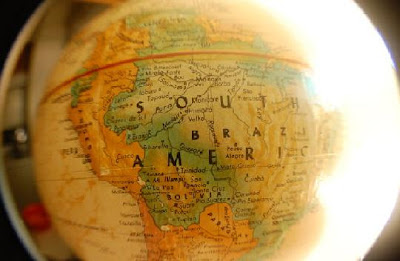
BRAZIL
Brazil grows approximately 35% of the world's coffee, but only Santos is considered important by the specialty coffee industry. Another coffee, Rio, is also well known for it's medicinal taste, and is often used in New Orleans coffee with the addition of chicory. Bourbon Santos is Brazil's finest grade of coffee, and the beans from the Arabica trees that produce this coffee are small and curly for the first three or four years of production. During this time, the coffee is called Bourbon Santos. As the trees age, the beans become larger and lose quality. They are then referred to as flat bean Santos. Brazilian coffee is generally produced using the dry-process.
ECUADOR
Ecuador produces a large amount of coffee, but it is rarely seen in the United States. These coffees are undistinguished, with light to medium body and mild acidity.
PERU
Because of its mild character, Peruvian coffee is used for blending, French roasts, and as a flavored-coffee base. Some good coffee can be found high in the Andes in the Chanchamayo and Urubamba Valleys, and northern Peru is developing a reputation as a producer of good quality, certified organic coffees.
VENEZUELA
The highest quality Venezuelan coffee is grown in the western part of the country near the Colombian border. Maraciabos, as this coffee is known, refers to the port from which the coffee is shipped. The most famous Maraciabos are Cucuta, Merida, Trujillo and Tachira. Coffee grown in the eastern mountains is called Caracas, after the capital city. Venezuelan coffees differ from other coffees grown in the region in that they are much lower in acidity.
COLOMBIA
Colombia produces 12% of the world's coffee supply, and is second only to Brazil. The bulk of Colombian coffee is of high quality, and the country has done an excellent job marketing its product through the visage of Juan Valdez. Peasants grow the coffee at high altitudes, and it is processed using the wet method. Three mountain ranges, called cordilleras, trisect Colombia from north to south. The central and eastern cordilleras produce the best coffee. The most famous coffees in the central cordillera are: Medellin, Armenia, and Manizales, named for cities where they are marketed. Medellin is the most famous, and has heavy body, rich flavor and balanced acidity. Armenia and Manizales have less body and acidity. In the US all three coffees may be marketed together as MAM. In the eastern cordillera, Bogota and Bucaramanga are the most famous coffees. Bogota is considered one of Colombia's finest coffees, and contains less acid than Medellin, but is equally rich and flavorful. Bucaramanga has a low level of acid, but is rich in body and flavor.
Thursday, July 1, 2010
Coffee Production in Central America
Their light body, simplicity and sharp acidity distinguish the coffees produced in this growing region. They are typically thought of as having bright flavors with a clean, crisp finish.
MEXICO
Mexico produces large quantities of unremarkable coffee that is often used for dark roasts and blending. The state of Vera Cruz produces many of these average coffees in its low laying regions, but in its mountains near the city of Coatepec an excellent coffee called Altura Coatepec is produced. These high grown, or altura, coffees are light bodied, nutty, with a chocolate tang and acidic snap. Altura Orizaba and Altura Huatusco are other fine coffees produced in Vera Cruz. The state of Oaxaca in the central mountains also produces some good coffees, referred to as either Oaxaca or Oaxaca Pluma. Chiapas, near the Guatemalan border, produces coffee under the market name Tapachula, and is also gaining a reputation for its above average organic coffees. Coffees are produced using the wet-process.
EL SALVADOR
The flavor of Salvadorian coffee is mild, with good balance, medium body, sharp acidity and a hint of sweetness. The best grade of Salvadorian coffee is called strictly high grown. El Salvador produces an excellent certified organic coffee under the brand name of Pipil. All coffees are produced using the wet-process.
GUATEMALA
Some of the world's greatest coffee is produced in the central Highlands of Guatemala. The most famous regional marketing names are: Antigua, Coban and Huehuetenango. High quality Guatemalan coffees are produced using the wet-process and are of high acidity and medium body, with smoky, spicy and chocolate flavors. Guatemalan coffee is often marketed by grade, with the highest grade being strictly hard bean, which indicates coffees grown at 4,500 feet or above. A secondary grade is hard bean, designating coffees grown between 4,000 and 4,500 feet.
HONDURAS
Honduran coffee is wet-processed and mainly used as a cheap blending coffee. Some excellent coffees are grown here, but they are often blended with inferior beans before they are exported and are difficult to find.
JAMAICA
Jamaica is the home of Jamaican Blue Mountain, one of the world's most controversial coffees. Once a superb coffee characterized by a nutty aroma, bright acidity and a unique beef-bouillon like flavor, recent overproduction, lack of attention to quality and profiteering have led to a mediocre, over-priced product. Some confusion exists about where the boundaries for growing this coffee actually lie, and often coffees of lesser quality are packaged under its name. Jamaican High Mountain is a term that applies to coffees of lesser quality that are grown at a lower altitude than Jamaican Blue Mountain. Both coffees are produced using the wet-process.
